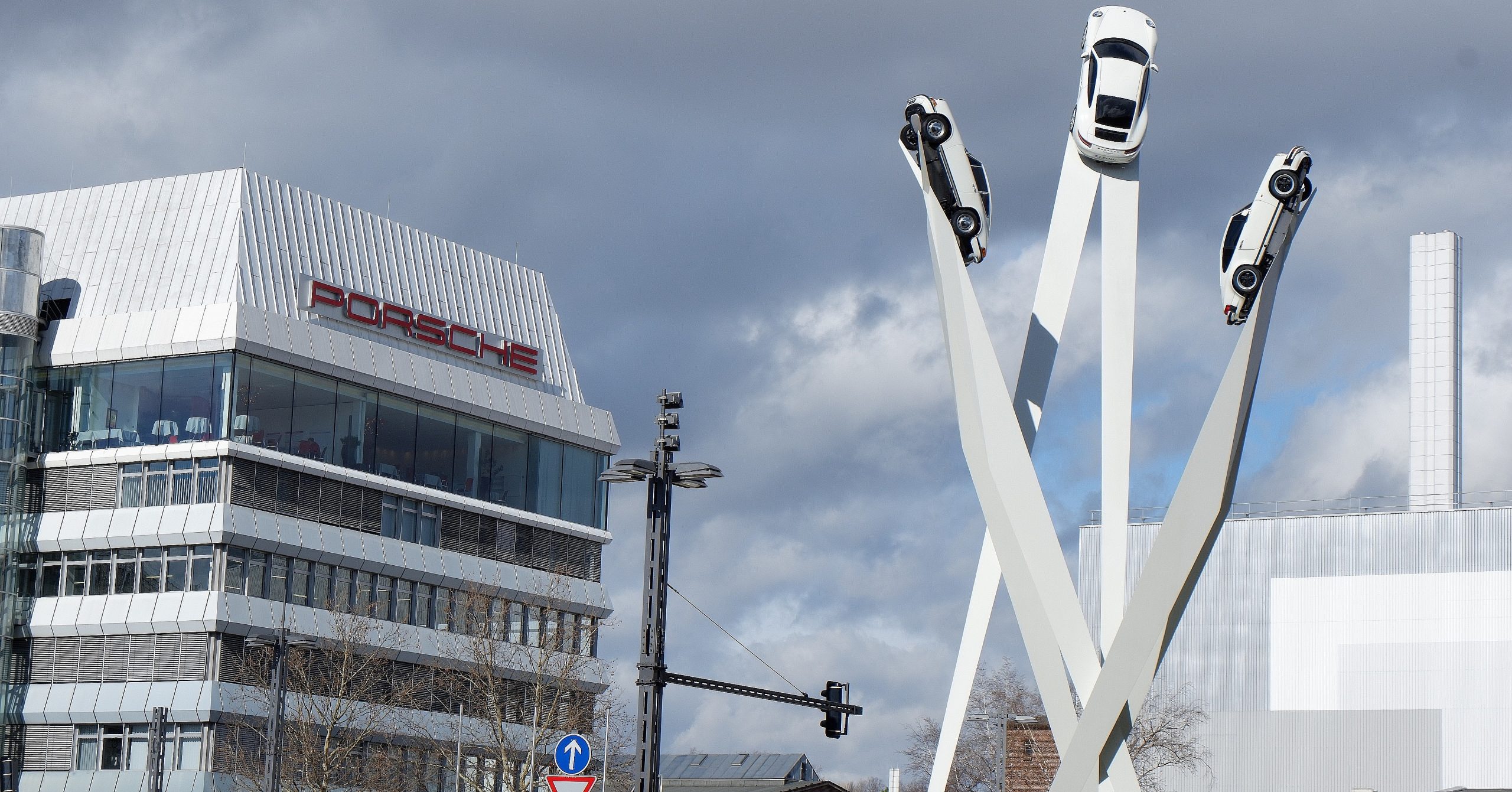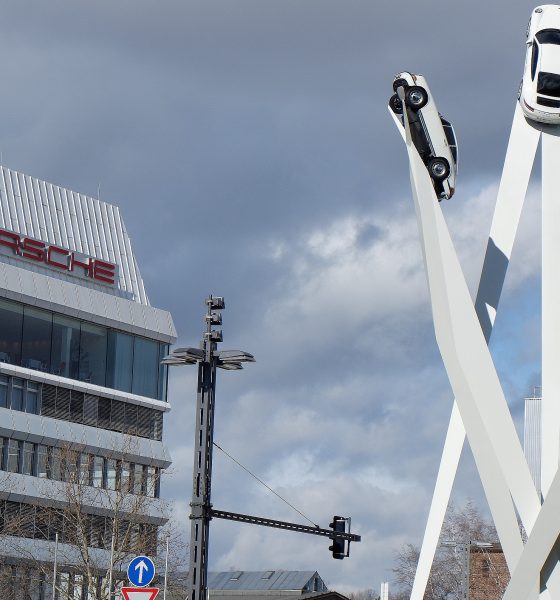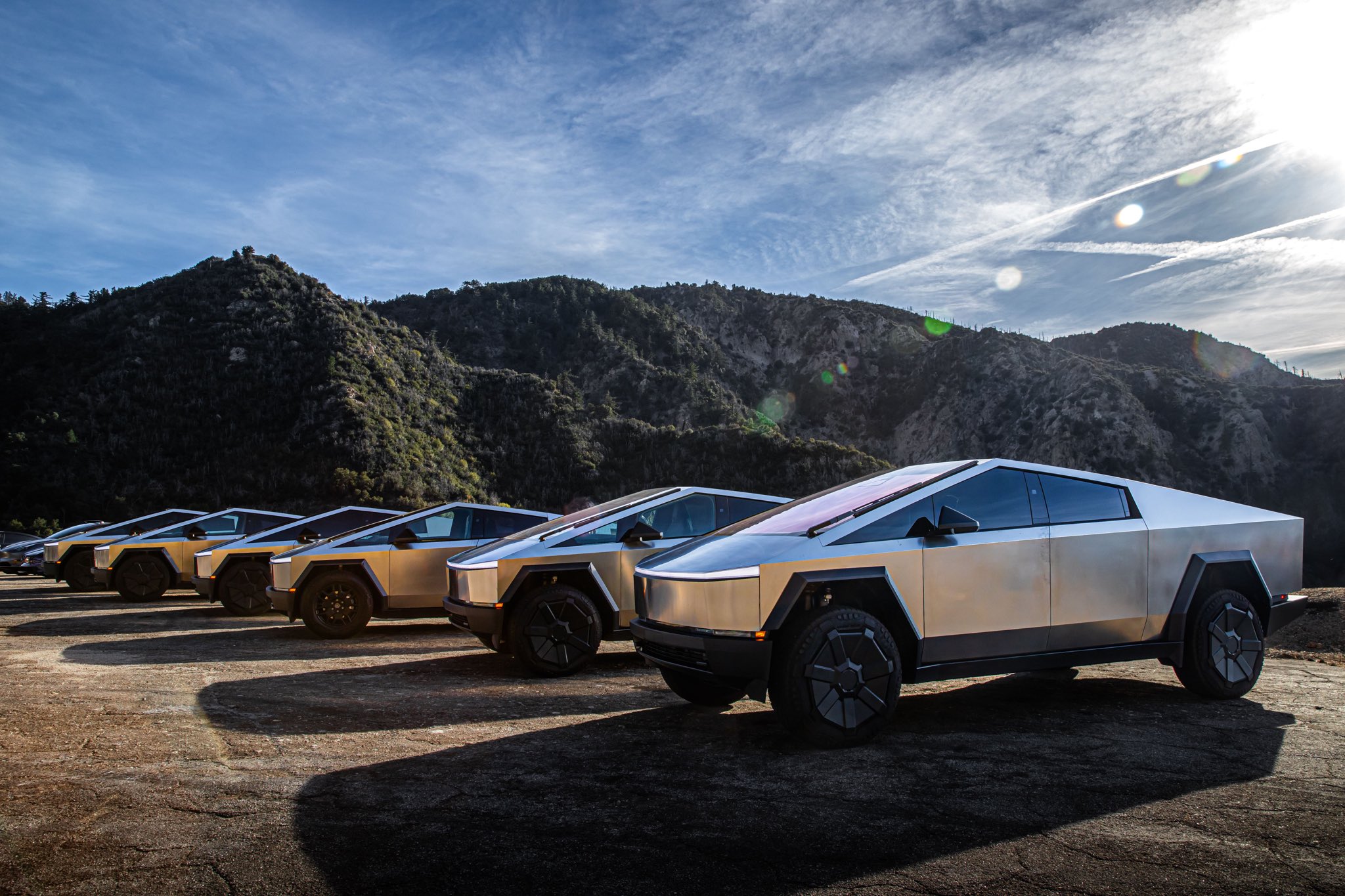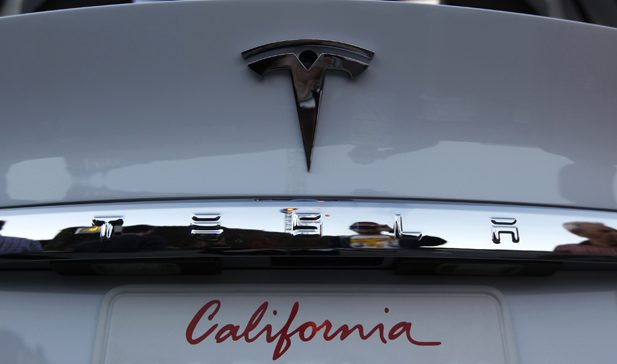

News
Exclusive: Porsche’s electric heart beats in the Taycan’s Zuffenhausen factory
Beside the red-bricked walls of Porsche’s headquarters at Zuffenhausen, an electric transformation is taking place. It is a transformation that echoes back to its earliest days, despite the company’s pedigree with the internal combustion engine. Tall, modern-looking buildings sit side-by-side with older factories and shops that have literally witnessed history. The faint sounds of heavy machinery are audible in the distance, a reminder that work in the historic site is ongoing.
“We’re building a factory within a factory within a city with residences close by, hardly any space, and this in high speed,” says Porsche representative of the project David Tryggvason, lightly pointing out that the timeframe of the project is very Porsche-like: Sporty.
Porsche is actively engaged in a massive construction project in its Stuttgart-Zuffenhausen site, roughly 120 miles from Frankfurt, with the company running full throttle as it prepares for the production of the Taycan. The result of these efforts could only be described as a rebirth of sorts, since the company that started with an electric car is now pushing itself to re-embrace all-electric vehicles, perhaps just as intended by its founder, Ferdinand Porsche, more than a hundred years ago.

An electric transition
A lot is riding on the Porsche Taycan. During the company’s annual press conference, Porsche CEO Oliver Blume and Deputy Chairman of the Executive Board Lutz Meschke emphasized how all-electric vehicles like the Taycan and its lineup of hybrid cars are pertinent for the company’s future. In a statement, Meschke noted that by 2030, vehicles powered by an internal combustion engine would likely be the exception to the rule.
“One thing is clear: from 2030 onwards; there probably won’t be any vehicle model from Porsche without an electric variant. I actually presume that by 2025, we will have electrified significantly more than half of our entire model range. But the combustion engine will still be around in 2030. Our 911 will hopefully still be driving with them for a long time to come. Conventionally powered vehicles will at that point be the niche in our electric fleet,” he said.
Before it can produce a successful electric vehicle, Porsche needs to ensure that it has the facilities necessary to build a completely different type of car. The veteran automaker opted to construct several new facilities to accommodate the Taycan’s production, and it had to overcome numerous challenges to make the buildout possible. The Zuffenhausen site is a stone’s throw away from a residential neighborhood, and the site itself is split by a four-lane road. With space being scarce, Tryggvason notes that the company did the only thing it can do: it built up. Overall, building the Taycan is complex. Setting up the facility even more so. For the project manager, the challenges were worth it. “We believe in the product,” David said.

A high-stakes, collective effort
The company’s bet on the Taycan is evident in its investment for the vehicle and the actions of its own employees. Porsche is spending about 6 billion euros (around $6.81 billion) for the development of its electric mobility initiatives. Porsche Production 4.0, a campaign aimed at ushering in a new era of vehicle production, is also underway. Accelerating these developments is a deal that the carmaker struck with its employees, who agreed to forego a small part of their collective salary increase in exchange for their participation in the Taycan’s production and release.
David Tryggvason and Porsche Press Spokesman Jorg Walz later directed me to the roof of one of the new buildings, and I was able to get a pretty good view of the factory itself. They pointed out how the Taycan starts its life by having its electric motors, batteries, and axles assembled. The electric car’s body then gets put together, painted, and transported across a long conveyor system where it can go through final assembly and married to its electric drive unit.
A key to the successful production run of the Porsche Taycan is the company’s target of manufacturing the vehicle in a “smart, lean and green” manner. Examples of these include a flexi-line that uses automated guided vehicles for simpler assembly despite the expansive customization requests from Taycan buyers, optimizations in the use of resources and space, and an initiative to ensure that the entire production process of the all-electric car at Porsche’s Stuttgart-Zuffenhausen site is CO2-neutral. This is made possible through several programs such as the electrification of logistics vehicles, the use of waste heat in the paint shop, and a pilot trial that involves the adoption of nitrogen-absorbing facade surfaces, to name a few.

Race-bred batteries for a race-bred electric car
Not one to waste a rare opportunity to ask for details about the Taycan, I decided to ask a little about the electric car’s battery performance. Over the past year, several great electric vehicles were released by veteran carmakers such as Jaguar and Mercedes-Benz, but inasmuch as the machines themselves were impressive, their batteries left much to be desired. The I-PACE, for all its stunning interior and excellent design, is pretty much the electric equivalent of a gas guzzler. The Mercedes-Benz EQC seems to be the same.
Porsche uses pouch cells from LG Chem in the Taycan’s battery pack, which is expected to give the vehicle over 300 miles of range per charge under the NEDC standard. The company is aiming for ultra-fast 350 kW charging as well, thanks to its 800-volt technology, which was used first in Porsche’s LMP1 racecar 919 Hybrid. I asked how the Taycan’s battery holds up when charged continually with such a high rate of charge. Walz smiled and candidly stated “We’re very optimistic.”
After the annual press conference, I was able to sit in for an informal discussion of Porsche’s electrification with executive board member Detlev von Platen. The Porsche exec highlighted that the Taycan’s battery cells were closely developed by the company, thanks to its experience from its high-performance hybrid vehicles. Examples include the legendary Porsche 918 Spyder hypercar and the three-time Le Mans-winning Porsche 919 Hybrid racecar, both of which required some work in their batteries.

“So we’re absolutely involved, deeply involved, in the development of the (Taycan’s battery) cells and the technology behind it. We haven’t started last year with the Taycan. We have worked since a long time already on battery technology from motorsport. Our prototypes like the 919 Hybrid was electrified. So I would say, in general terms, that we have started to work on battery technology at least ten years now,” Von Platen candidly said.
I was reminded of David Tryggvason’s overview of the Taycan’s components a couple of days before, when he remarked that some of the Porsche personnel who worked for the 918 Spyder hypercar also worked in the development of the Taycan. Upon hearing Von Platen’s description of Porsche’s work with batteries, I couldn’t help but agree with his point. Porsche has produced several iconic vehicles in the past, and the majority of them are powered by the internal combustion engine. Despite this, it is difficult to argue that the best cars the company has ever produced, such as the 919 Hybrid, are imbued with electric propulsion at their core. Beneath the roaring engines of the vehicles were electric motors and batteries that ultimately unlocked the cars’ real potential.

From the past to the future
An engineer at heart, Ferdinand Porsche started with an electric car at the end of the 19th century. He later dipped his feet in hybrid propulsion, before going ahead and gaining mastery of the internal combustion engine. From this perspective, the development of the Taycan feels like a homage to the company’s roots, and this is a big reason why Porsche is dead serious about the vehicle. In what appears to be a gesture to prove this, the Taycan is being built on the company’s most historic site, and it will be produced alongside the 911, a vehicle that can only be dubbed as the quintessential Porsche.
As I grabbed my travel gear and scurried to the remaining shuttle that was awaiting my presence, I looked back at Porsche’s headquarters one last time. There in the dark sky stood a marvel of orderliness in this ever-changing world. It was a moment that can only to be described as surreal, when the past breathes new life into the future. Seconds later, as I buckled myself down on the shuttle seat and gazed into a disappearing Zuffenhausen site, the sounds of whirring machinery and vehicles rolling off the factory floor can be heard in the distance. Beneath this orchestra of sounds were the rhythmic thumps of heavy equipment that continued to work tirelessly to build Taycan’s upcoming production facilities.
I couldn’t help but imagine that the sounds were representative of the electric heartbeat of a carmaker, coming to life once more.

Cybertruck
Tesla made a change to the Cybertruck and nobody noticed

Tesla made a change to the Cybertruck, and nobody noticed. But to be fair, nobody could have, but it was revealed by the program’s lead engineer that it was aimed toward simplifying manufacturing through a minor change in casting.
After the Cybertruck was given a Top Safety Pick+ award by the Insurance Institute for Highway Safety (IIHS), for its reputation as the safest pickup on the market, some wondered what had changed about the vehicle.
Tesla makes changes to its vehicles routinely through Over-the-Air software updates, but aesthetic changes are relatively rare. Vehicles go through refreshes every few years, as the Model 3 and Model Y did earlier this year. However, the Cybertruck is one of the vehicles that has not changed much since its launch in late 2023, but it has gone through some minor changes.
Most recently, Wes Morrill, the Cybertruck program’s Lead Engineer, stated that the company had made a minor change to the casting of the all-electric pickup for manufacturing purposes. This change took place in April:
We made a minor change on the casting for manufacturability in April. Our Internal testing shows no difference in crash result but IIHS only officially tested the latest version
— Wes (@wmorrill3) December 17, 2025
The change is among the most subtle that can be made, but it makes a massive difference in manufacturing efficiency, build quality, and scalability.
Morrill revealed Tesla’s internal testing showed no difference in crash testing results performed by the IIHS.
The 2025 Cybertruck received stellar ratings in each of the required testing scenarios and categories. The Top Safety Pick+ award is only given if it excels in rigorous crash tests. This requires ‘Good’ ratings in updated small and moderate overlap front, side, roof, and head restraints.
Additionally, it must have advanced front crash prevention in both day and night. Most importantly, the vehicle must have a ‘Good’ or ‘Acceptable’ headlights standard on all trims, with the “+ ” specifically demanding the toughest new updated moderate overlap test that checks rear-seat passenger protection alongside driver safety.
News
Tesla enters interesting situation with Full Self-Driving in California

Tesla has entered an interesting situation with its Full Self-Driving suite in California, as the State’s Department of Motor Vehicles had adopted an order for a suspension of the company’s sales license, but it immediately put it on hold.
The company has been granted a reprieve as the DMV is giving Tesla an opportunity to “remedy the situation.” After the suspension was recommended for 30 days as a penalty, the DMV said it would give Tesla 90 days to allow the company to come into compliance.
The DMV is accusing Tesla of misleading consumers by using words like Autopilot and Full Self-Driving on its advanced driver assistance (ADAS) features.
The State’s DMV Director, Steve Gordon, said that he hoped “Tesla will find a way to get these misleading statements corrected.” However, Tesla responded to the story on Tuesday, stating that this was a “consumer protection” order for the company using the term Autopilot.
It said “not one single customer came forward to say there’s a problem.” It added that “sales in California will continue uninterrupted.”
This was a “consumer protection” order about the use of the term “Autopilot” in a case where not one single customer came forward to say there’s a problem.
Sales in California will continue uninterrupted.
— Tesla North America (@tesla_na) December 17, 2025
Tesla has used the terms Autopilot and Full Self-Driving for years, but has added the term “(Supervised)” to the end of the FSD suite, hoping to remedy some of the potential issues that regulators in various areas might have with the labeling of the program.
It might not be too long before Tesla stops catching flak for using the Full Self-Driving name to describe its platform.
Tesla Robotaxi goes driverless as Musk confirms Safety Monitor removal testing
The Robotaxi suite has continued to improve, and this week, vehicles were spotted in Austin without any occupants. CEO Elon Musk would later confirm that Tesla had started testing driverless rides in Austin, hoping to launch rides without any supervision by the end of the year.
Investor's Corner
Tesla stock closes at all-time high on heels of Robotaxi progress

Tesla stock (NASDAQ: TSLA) closed at an all-time high on Tuesday, jumping over 3 percent during the day and finishing at $489.88.
The price beats the previous record close, which was $479.86.
Shares have had a crazy year, dipping more than 40 percent from the start of the year. The stock then started to recover once again around late April, when its price started to climb back up from the low $200 level.
This week, Tesla started to climb toward its highest levels ever, as it was revealed on Sunday that the company was testing driverless Robotaxis in Austin. The spike in value pushed the company’s valuation to $1.63 trillion.
Tesla Robotaxi goes driverless as Musk confirms Safety Monitor removal testing
It is the seventh-most valuable company on the market currently, trailing Nvidia, Apple, Alphabet (Google), Microsoft, Amazon, and Meta.
Shares closed up $14.57 today, up over 3 percent.
The stock has gone through a lot this year, as previously mentioned. Shares tumbled in Q1 due to CEO Elon Musk’s involvement with the Department of Government Efficiency (DOGE), which pulled his attention away from his companies and left a major overhang on their valuations.
However, things started to rebound halfway through the year, and as the government started to phase out the $7,500 tax credit, demand spiked as consumers tried to take advantage of it.
Q3 deliveries were the highest in company history, and Tesla responded to the loss of the tax credit with the launch of the Model 3 and Model Y Standard.
Additionally, analysts have announced high expectations this week for the company on Wall Street as Robotaxi continues to be the focus. With autonomy within Tesla’s sights, things are moving in the direction of Robotaxi being a major catalyst for growth on the Street in the coming year.








